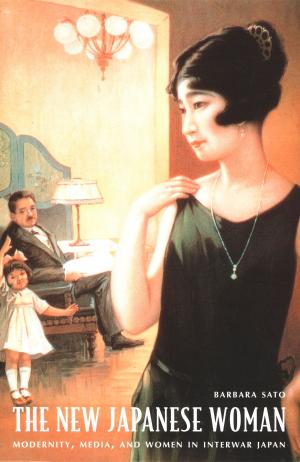Wallowing in Sex
The New Sexual Culture of 1970s American Television
Nonfiction, Entertainment, Performing Arts, Television, History & Criticism| Author: | Elana Levine, Lynn Spigel | ISBN: | 9780822389774 |
| Publisher: | Duke University Press | Publication: | January 9, 2007 |
| Imprint: | Duke University Press Books | Language: | English |
| Author: | Elana Levine, Lynn Spigel |
| ISBN: | 9780822389774 |
| Publisher: | Duke University Press |
| Publication: | January 9, 2007 |
| Imprint: | Duke University Press Books |
| Language: | English |
Passengers disco dancing in The Love Boat’s Acapulco Lounge. A young girl walking by a marquee advertising Deep Throat in the made-for-TV movie Dawn: Portrait of a Teenage Runaway. A frustrated housewife borrowing Orgasm and You from her local library in Mary Hartman, Mary Hartman. Commercial television of the 1970s was awash with references to sex. In the wake of the sexual revolution and the women’s liberation and gay rights movements, significant changes were rippling through American culture. In representing—or not representing—those changes, broadcast television provided a crucial forum through which Americans alternately accepted and contested momentous shifts in sexual mores, identities, and practices.
Wallowing in Sex is a lively analysis of the key role of commercial television in the new sexual culture of the 1970s. Elana Levine explores sex-themed made-for-TV movies; female sex symbols such as the stars of Charlie’s Angels and Wonder Woman; the innuendo-driven humor of variety shows (The Sonny and Cher Comedy Hour, Laugh-In), sitcoms (M*A*S*H, Three’s Company), and game shows (Match Game); and the proliferation of rape plots in daytime soap operas. She also uncovers those sexual topics that were barred from the airwaves. Along with program content, Levine examines the economic motivations of the television industry, the television production process, regulation by the government and the tv industry, and audience responses. She demonstrates that the new sexual culture of 1970s television was a product of negotiation between producers, executives, advertisers, censors, audiences, performers, activists, and many others. Ultimately, 1970s television legitimized some of the sexual revolution’s most significant gains while minimizing its more radical impulses.
Passengers disco dancing in The Love Boat’s Acapulco Lounge. A young girl walking by a marquee advertising Deep Throat in the made-for-TV movie Dawn: Portrait of a Teenage Runaway. A frustrated housewife borrowing Orgasm and You from her local library in Mary Hartman, Mary Hartman. Commercial television of the 1970s was awash with references to sex. In the wake of the sexual revolution and the women’s liberation and gay rights movements, significant changes were rippling through American culture. In representing—or not representing—those changes, broadcast television provided a crucial forum through which Americans alternately accepted and contested momentous shifts in sexual mores, identities, and practices.
Wallowing in Sex is a lively analysis of the key role of commercial television in the new sexual culture of the 1970s. Elana Levine explores sex-themed made-for-TV movies; female sex symbols such as the stars of Charlie’s Angels and Wonder Woman; the innuendo-driven humor of variety shows (The Sonny and Cher Comedy Hour, Laugh-In), sitcoms (M*A*S*H, Three’s Company), and game shows (Match Game); and the proliferation of rape plots in daytime soap operas. She also uncovers those sexual topics that were barred from the airwaves. Along with program content, Levine examines the economic motivations of the television industry, the television production process, regulation by the government and the tv industry, and audience responses. She demonstrates that the new sexual culture of 1970s television was a product of negotiation between producers, executives, advertisers, censors, audiences, performers, activists, and many others. Ultimately, 1970s television legitimized some of the sexual revolution’s most significant gains while minimizing its more radical impulses.















